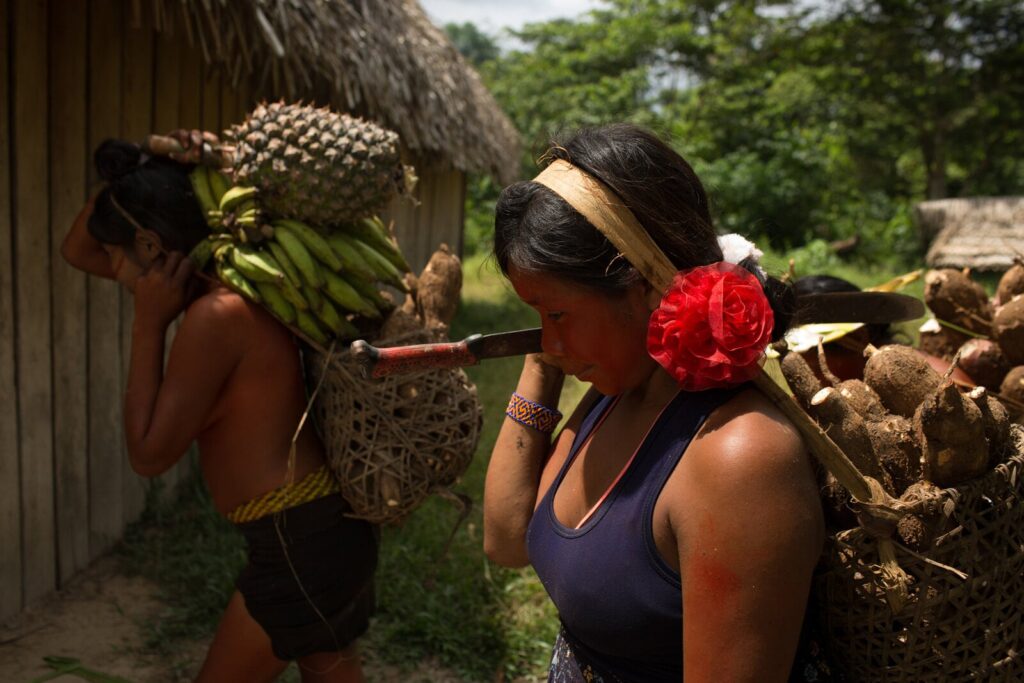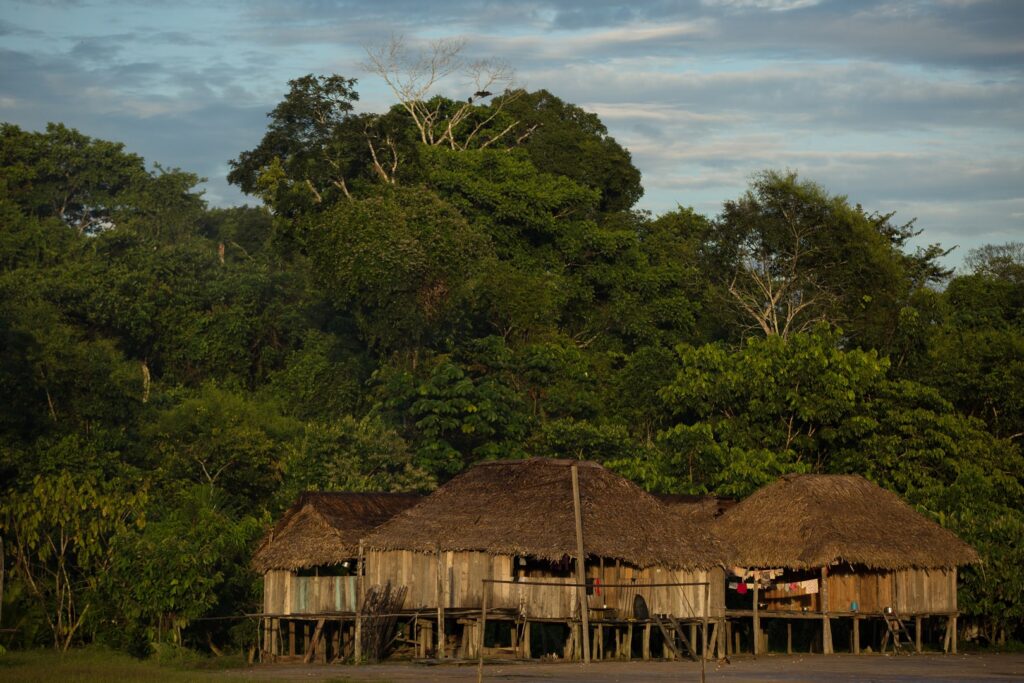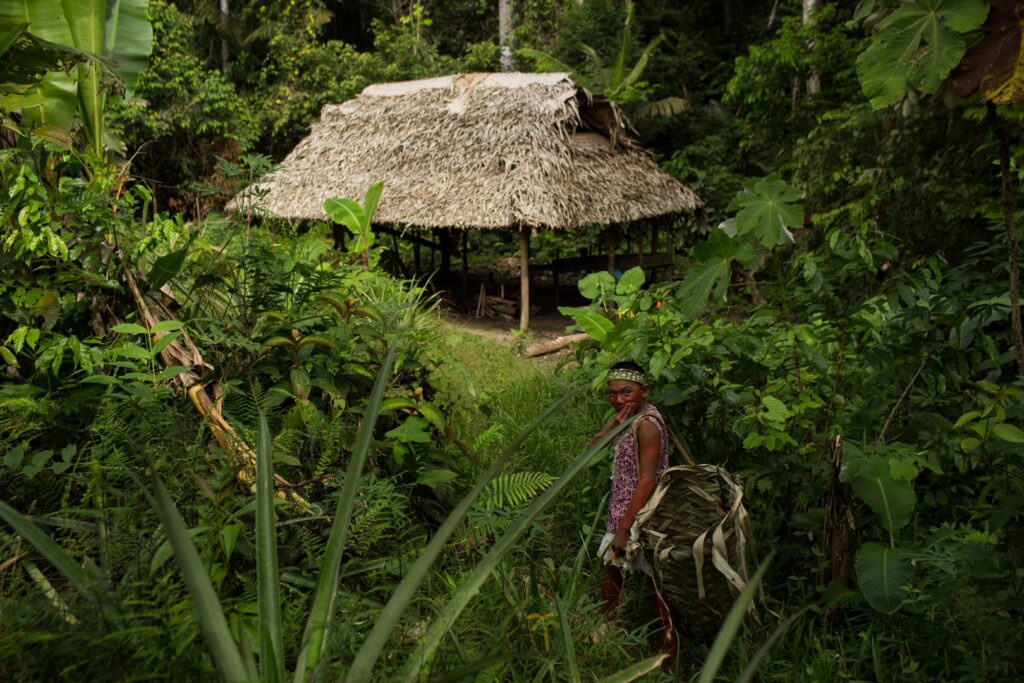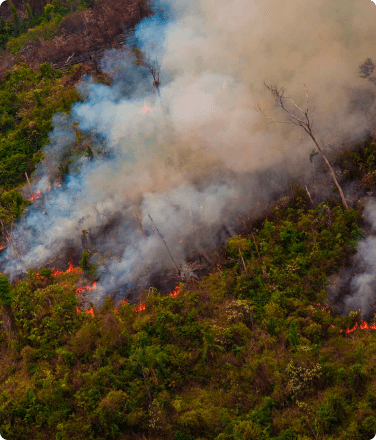For centuries, many people in the Western world believed the Amazon to be an unpopulated and untouched forest. This has never been entirely true. Recent research reveals that the Amazon has been managed by Indigenous peoples for thousands of years. On this International Day of the World’s Indigenous Peoples, we share how—through the creation of fertile soils and carefully selecting and cultivating various plant and tree species over millennia—they have transformed the Amazon into a vast cultivated garden.
In the past, Western researchers widely considered the Amazon to be an inhospitable environment, unable to sustain large populations due to its poor soil and unsuitability for agriculture. This environmentally deterministic idea was reinforced by studies conducted by American scientist Betty Meggers (1921-2012), a pioneer in Amazonian archaeology.

According to this view, the Amazon was a peripheral and sparsely populated region of South America. Innovations were believed to have come from outside the forest. For example, ceramics were thought to have originated in the Andes, where more complex civilizations with state-structured societies existed.
Today, however, most archaeologists disagree with these views. Together with a legion of collaborators, Brazilian archaeologist Eduardo Góes Neves is leading the movement to rewrite the ancient history of the forest, giving Indigenous inhabitants of the Amazon the recognition and protagonism they deserve. [1]
Neves and other scholars have shown that contrary to earlier beliefs, the Amazon was a center of technological innovation. Their research has revealed that the region was once densely populated by 8 to 10 million people, dating back at least 8,000 years, and probably much longer. The reduced population observed by the first European settlers was likely due to devastating epidemics, such as smallpox, which were brought by the colonists themselves and spread rapidly across the basin, far outpacing their own advance into the region.
A large part of their research focuses on evidence of landscape modifications. Due to the lack of rocks, Indigenous peoples modified the land through other means, such as the cultivation of nutrient-rich dark earth (known as Terra Preta), geoglyphs, raised mounds, and domesticated forests. For the latter, studies have shown how trees were carefully selected over millennia to provide vital resources for forest inhabitants.
Terra Preta, also known as Amazonian Dark Earths, is a focal point of this new research. This extraordinarily fertile soil was widely distributed throughout the Amazon basin as far back as 5,000 years ago and remains a testament to Indigenous peoples’ ability to transform the environment sustainably. While much of the soil in the Amazon has low nutrient density, Dark earths were deliberately cultivated across generations and maintained their nutrients for centuries, demonstrating the deep ecological knowledge and sustainable management practices of the region’s ancient inhabitants, and challenging the notion that Amazonian soils are largely infertile and unable to support large populations.
In September 2023, a group of thirty authors published an article in Science Advances that helps explain the origins of these dark earths. Based on archaeological excavations and ethnological research and interviews with the Kuikuro people from the Xingu region, Brazil, the article proves that Indigenous peoples were intentionally creating dark earths with similar chemical compositions to those found at archaeological sites. [2]

Meanwhile, other studies show that many dominant tree species in the Amazon—such as cassava, sweet potato, cocoa, pineapple, and some pepper species—are the result of selective cultivation over approximately 12,000 years. [3] This cultivation practice created landscapes of abundance and diversity, in stark contrast with the monocultures and deforestation promoted by modern agribusiness.
According to Neves, Indigenous peoples not only shaped the forest in terms of biodiversity and soil fertility but also built monumental structures such as roads, canals, and platforms, comparable in importance to the stone pyramids of Andean civilizations.
“Contrary to the official chronology, which dates the beginning of Brazil’s history to the arrival of European colonizers in 1500, the land which now comprises [Brazil] has a very ancient history, going back approximately 12,000 years. Archaeology has discovered that, during this long period, the Amazon was always a densely populated region. Fragments of artifacts found under supposedly virgin forests, geoglyphs, and the so-called dark earth are significant signs of this substantial human presence in the region,” Neves said in an interview. [4]
Protecting the Amazon Requires Defending the Rights of Indigenous Peoples
The Amazon rainforest we know today is the result of care and deliberate interactions between Indigenous peoples and the forest itself over millennia. Any proposal to protect this invaluable and biodiverse region must include the intellectual contributions of the peoples who understand it best. Their accumulated knowledge offers valuable solutions for sustainable forest management and methods for addressing the climate crisis.

On August 9th, International Day of the World’s Indigenous Peoples, we at Rainforest Foundation US honor the rich history of the Amazon rainforest and its extremely diverse cultural heritage. We actively recognize the vital role of Indigenous peoples today in building a foundation of invaluable knowledge and contributing to sustainable conservation practices in the Amazon and beyond. Understanding and supporting the people who safeguard and implement these practices is crucial for building a resilient future in the face of climate change.
“Archaeology is not just about the past but also about the future. There are different ways to live and thrive in the Amazon. The current dominant model, which cuts down trees, burns the forest, contaminates rivers, and transforms the lush landscape into a desolate land, is not the only possible one. It is possible to live in and from the forest without destroying it. Indigenous peoples are the great guardians not only of the living forest but also of the archaeological treasures it hides,” Neves emphasized in a recent interview. [5]
When asked why the Indigenous peoples of the Amazon did not build pyramids, he responded:
“The forest itself is our pyramid.”
Notes
- [1] ‘Many features of the Amazon are man-made’: Q&A with archaeologist Eduardo Neves. Mongabay, May 2023.
- [2] Morgan J. Schmidt et al. Intentional creation of carbon-rich dark earth soils in the Amazon. Science Advance. https://www.science.org/doi/10.1126/sciadv.adh8499
- [3] STEEGE, Hans ter et al. Hyperdominance in the Amazonian Tree Flora. Science, v. 342, n. 6156, p. oct. 2013. 124392-1 – 1243092-9, 2013. https://acervo.socioambiental.org/sites/default/files/documents/prov0174.pdf
- [4] A Amazônia foi densamente povoada no passado e a ação humana moldou a floresta existente hoje. Agência Fapesp, 2022.
- [5] A floresta é a pirâmide. O arqueólogo Eduardo Neves está ajudando a reescrever a história da Amazônia. Revista Piauí, July 2024.



